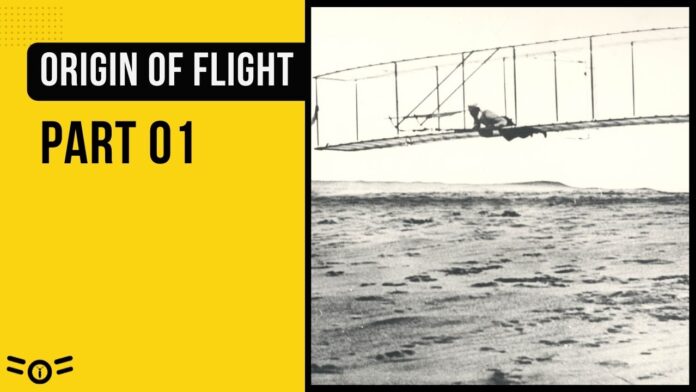HISTORY OF AVIATION:
With the invention of the internal combustion engine, in the late nineteenth century, new possibilities of motive force became available. By 1903 the automobile was set to challenge the horse. Transportation would soon change even more dramatically because of a new invention the aeroplane.
Within the century that followed, humankind took to the air, led by the pioneering example of Wilbur and Orville Wright. First in frail craft, but soon in sturdy and reliable machines, aviators shattered long-standing barriers of time and distance. By midcentury air travel was common, and by the late 1950s, it had replaced the train and steamship as the preferred mode of transport. By the last quarter of the twentieth century, with large, efficient jet-powered aircraft, air travel was commonplace and affordable to all.
Flying has become second nature to hundreds of millions of people and is so deeply intertwined into the fabric of society that it is impossible to imagine a world without it.

Legend of Icarus:
In the most famous of the ancient stories related to the sky, the skilled craftsman Daedalus makes wings of feathers and wax so he and his son Icarus can escape their imprisonment on the island of Crete. The technology improbably works, but Icarus flies too close to the sun and melts the wax, falling to his death.
Chinese Role:
As early as 400 BC, kites were made mainly for religious ceremonies in China. They helped to establish basic principles of aerodynamics. Traced back to the city of “Qufu” from 475-221 BC
Marco Polo reported in the 14th century that the Chinese had developed kites powerful enough to carry a man aloft. These kites were brought to Europe by sailors and merchants.
Chinese made four main types of kites Centipede; Hard Winged; Soft Winged; Flat Kites and “lanterns”.
Muslim Contribution to Aviation:
Abbas Ibn Firnas was a Muslim inventor, engineer, aviator, physician, Arabic poet, and musician. He covered himself with feathers for the purpose, attached a couple of wings to his body, and flung himself down into the air. He flew a considerable distance as if he had been a bird, but, in alighting again on the place whence he had started, his back was very much hurt.
In 852 he jumped from the minaret of the Grand Mosque in Cordoba (Qurtuba) using a loose cloak stiffened with wooden struts. The cloak is considered the first parachute. In 875, using a machine of silk and eagle’s feathers he tried again and flew for 10 minutes. The landing was improper, but he is credited with these two attempts. The crater Ibn Firnas on the Moon is named in his honour.
FIRST BALLOON FLIERS:
In June 1783 the Montgolfier brothers conducted the first public display of a hot-air balloon, and the following November François Pilâtre de Rozier and the Marquis d’Arlandes made the first manned ascent. Early French aeronauts achieved some spectacular flights. In February 1784 Jean-Pierre Blanchard soared to over 3,800m (12,500ft) in a hydrogen balloon.
The Montgolfier brothers established credibility through their invention and made their place in the history books. They sent animals up first on a test flight – a duck, a sheep, and a chicken. All landed safely. The first free manned flight followed on 21 November, when young physician François Pilâtre de Rozier and the Marquis d’Arlandes, an army officer, drifted over Paris covering 8km (5 miles) in about 25 minutes. Jean-Pierre Blanchard, with American expatriate John Jeffries on board, flew across the Channel from England to France in January 1785, 124 years before Louis Blériot.
If you like this content and want to see more content like this, follow Aéronefs


